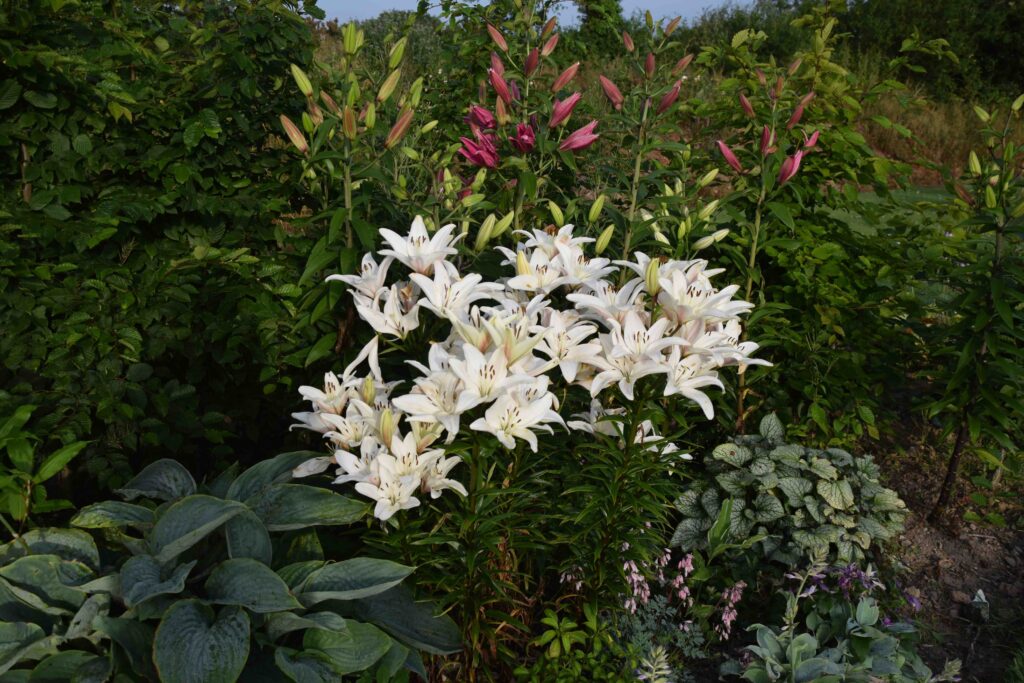
When I started to garden in a real way, some of the first groups of plants that fascinated me were orchids and lilies. Both groups of plants were rare and expensive – we are talking about the late 1970s and I was a teenager. Both groups are now commonplace and easier to find and grow. Orchids (mainly moth orchids) are the most widely available flowering pot plants and lilies are found everywhere, especially as cut flowers, all year round. That is all I am going to say about orchids because this week I want to talk about lilies.
In the wild there are lilies found throughout the northern hemisphere and one factor they all have in common is that they like a well-drained soil. Most are hardy and some can be a challenge to please but all the kinds for sale at Nags Hall will be easy to grow and completely hardy. Most summer-flowering bulbs are not hardy but lilies are not bothered by frost. So you can plant them now, either in pots or in the ground.
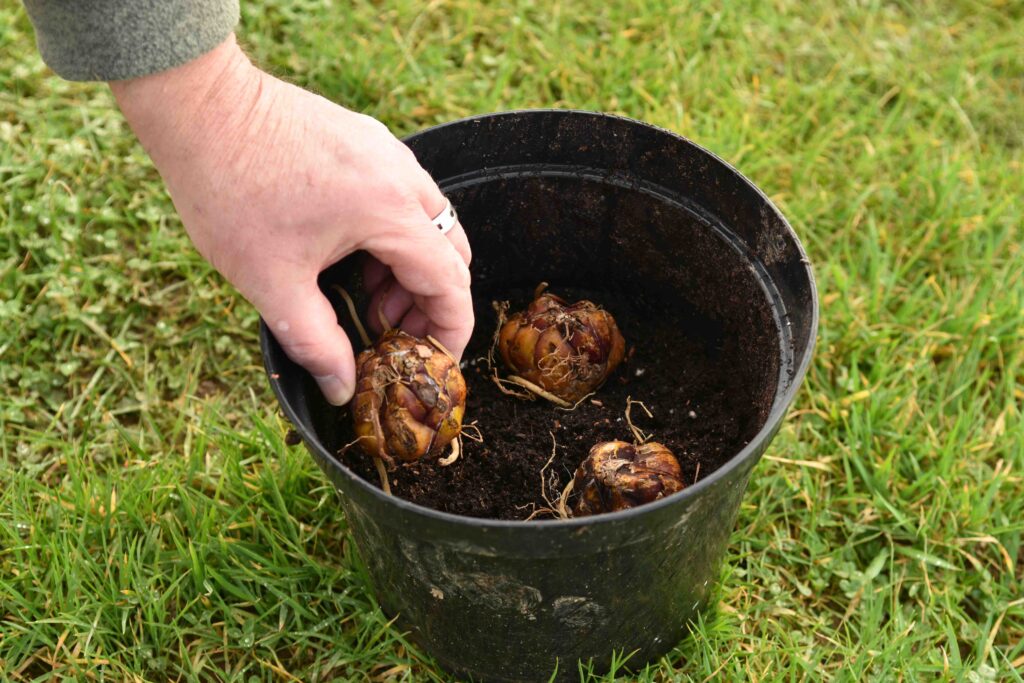
In fact it is best to plant lilies as soon as possible. Unlike many bulbs, lilies do not have a protective skin so are prone to desiccation when in packs. They also have basal rots which should be alive and fleshy when you plant them though lilies produce roots from the new stems that grow from the bulbs too. For this reason most lilies should be planted about 10cm (4in) deep, so they produce lots of roots from the stem above the bulb and under the soil or compost surface.
When planting in the garden, choose a site that does not sit in water and that is in sun or part shade. Lilies like organic matter in the soil so fork or dig in some compost – either garden compost or from bags of planting compost or potting compost. In pots you can plant in multipurpose compost.
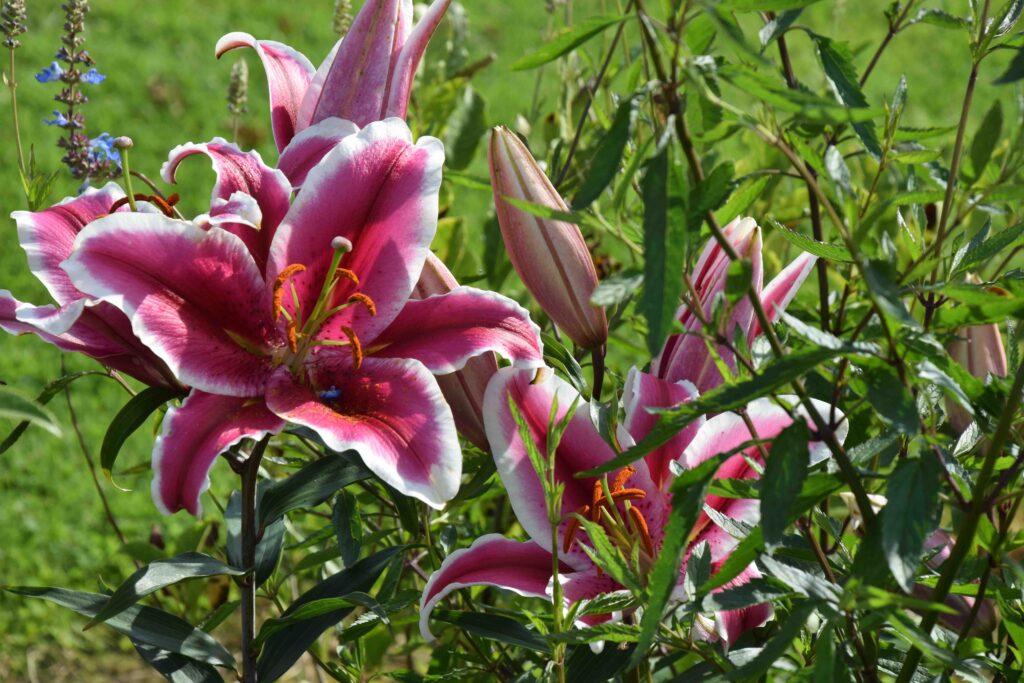
Most lilies are not fussy about soil and they will bloom well in any compost but there are exceptions. Oriental lilies, which usually have fragrant, starry, upward facing flowers in shades of red, pink or white, need acid soil. If planting in pots use ericaceous compost.
Asiatic lilies, which usually have scentless, starry flowers in shades of red, pink, orange, yellow and white, prefer an alkaline soil but are not too fussy. But they tend to fade away after a couple of years on acid soil. There are many dwarf Asiatic lilies and they are ideal in pots.
In addition to these there are many new kinds which are easy to grow. The most useful are the OT hybrids. These are hybrids of Oriental and Trumpet lilies and are very vigorous. They get taller each year and are often sold as ‘Tree Lilies’ or ‘Skyscraper Lilies’.
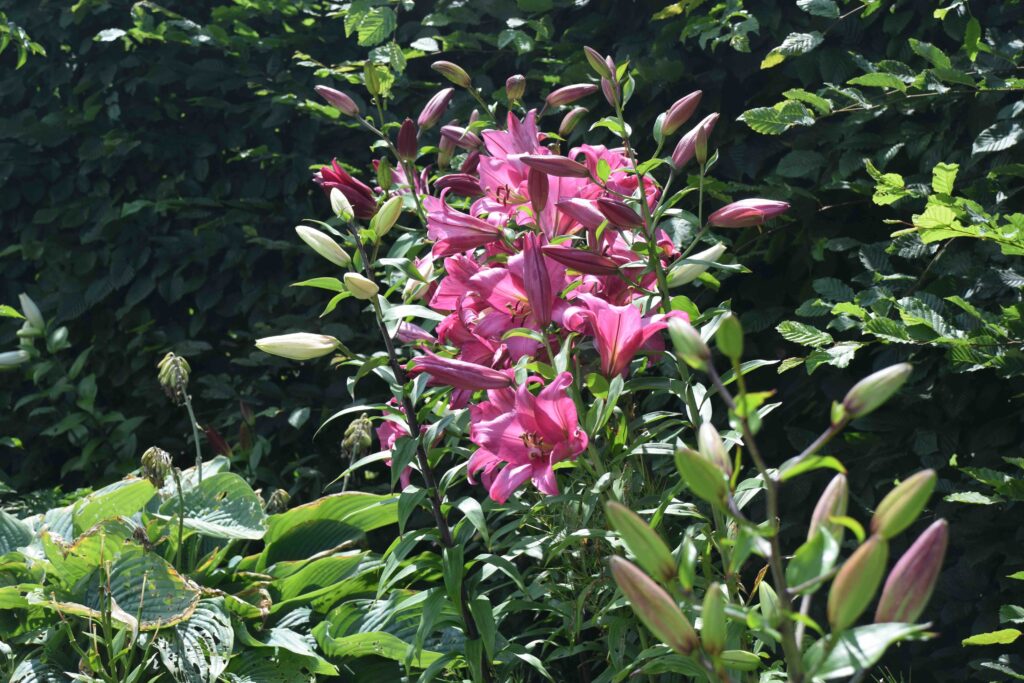
There are many other new kinds, that combine the best qualities of their parents. All these photos are of the lilies in my garden, which has rather heavy soil. One of the best, and one to look for, is ‘Fusion’, a strange hybrid that features the flower shape of the rather tricky L. pardalinum, but is very easy to grow.
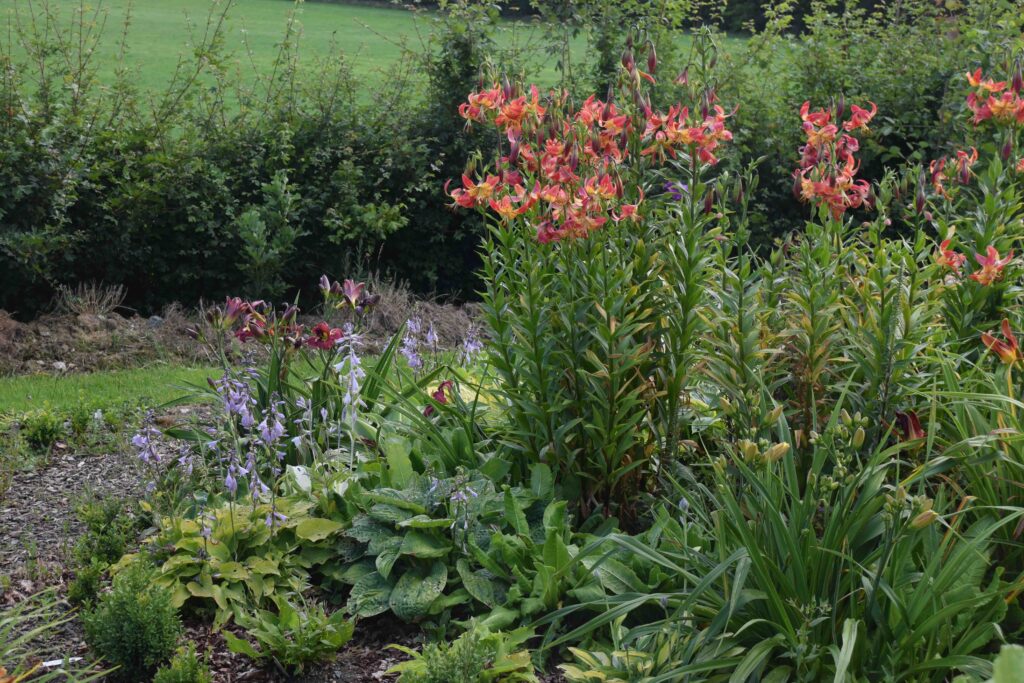
Lilies flower at various months through the summer, from late June to October.
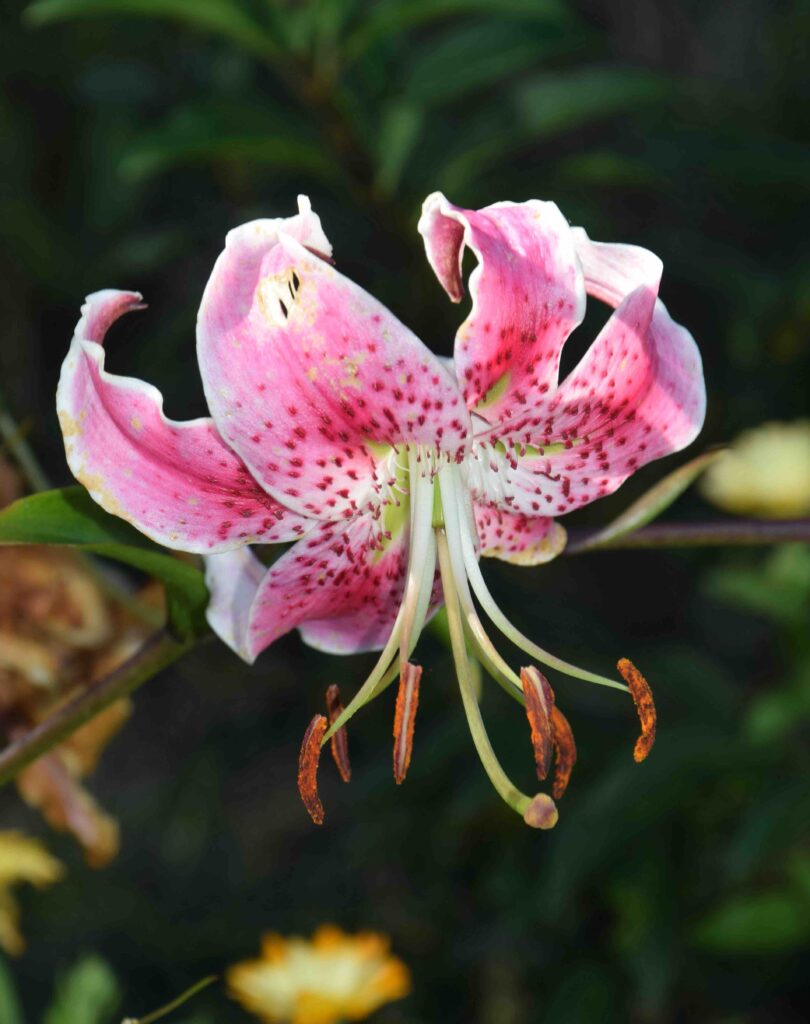
Lilies can be dangerous to cats and the pollen is the problem. When the flowers are open on the plants they pose little danger but when the petals and pollen fall to the ground cats could brush against them and clean their fur, ingesting the pollen. In the home the cut flowers should have the pollen removed as the blooms open. In the garden you can plant varieties that do not produce pollen. Many Asiatic types have pollen less flowers and many Orientals have double flowers that produce little or no pollen. I have a (precious) cat and deadhead the lilies as the flowers fade to protect her.
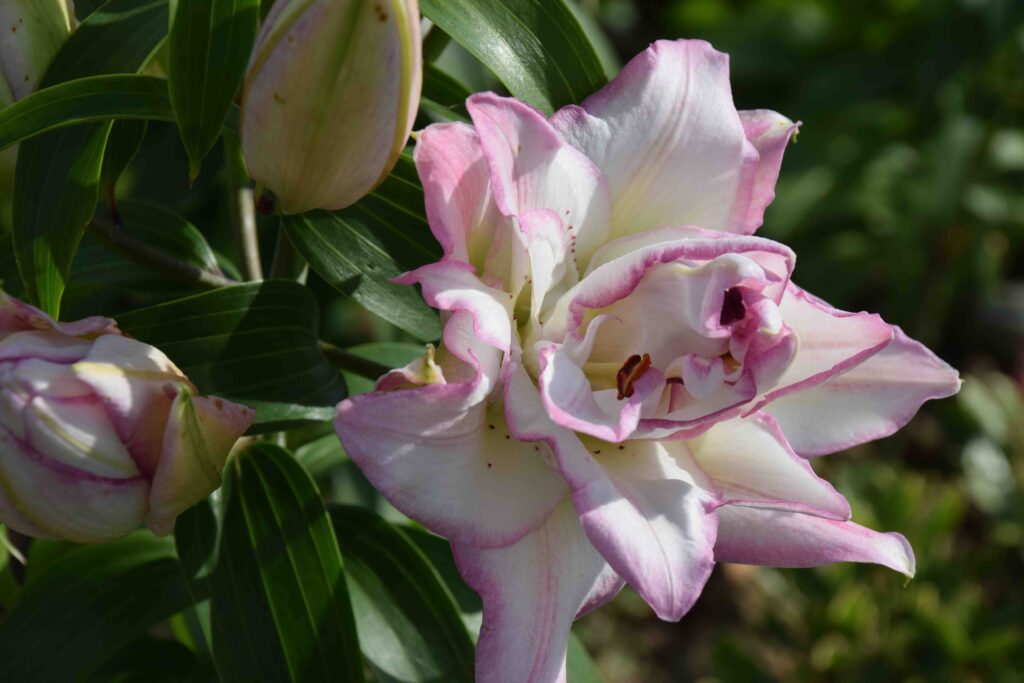
The biggest pest of lilies is lily beetle. These red beetles emerge in spring or fly into your garden and eat lily foliage and flowers. They lay eggs on the plants that hatch into grubs, covered in black slime, that also eat the plants. Pick them off or , if you prefer, spray the plants to control them. Avoid spraying when the flowers are open, to avoid danger to other insects. I generally garden organically and do not use sprays but I do resort to spraying against lily beetle now and then.
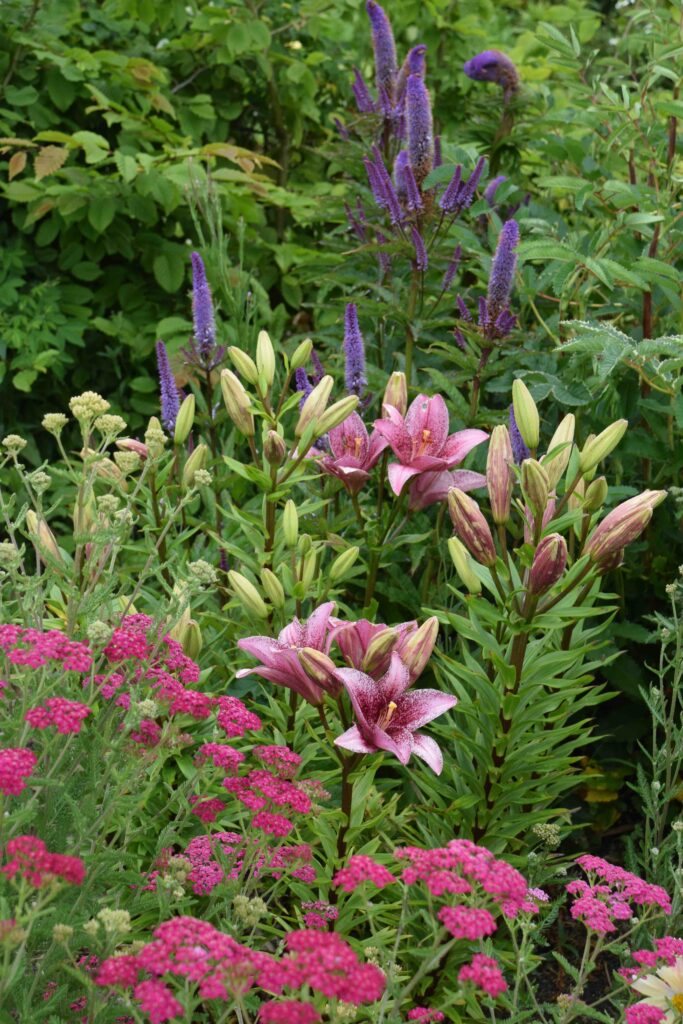
You can cut your lilies for the home. When cutting, try to leave at least half the stem behind so the bulbs have enough leaves to ‘feed’ the bulbs for next season.